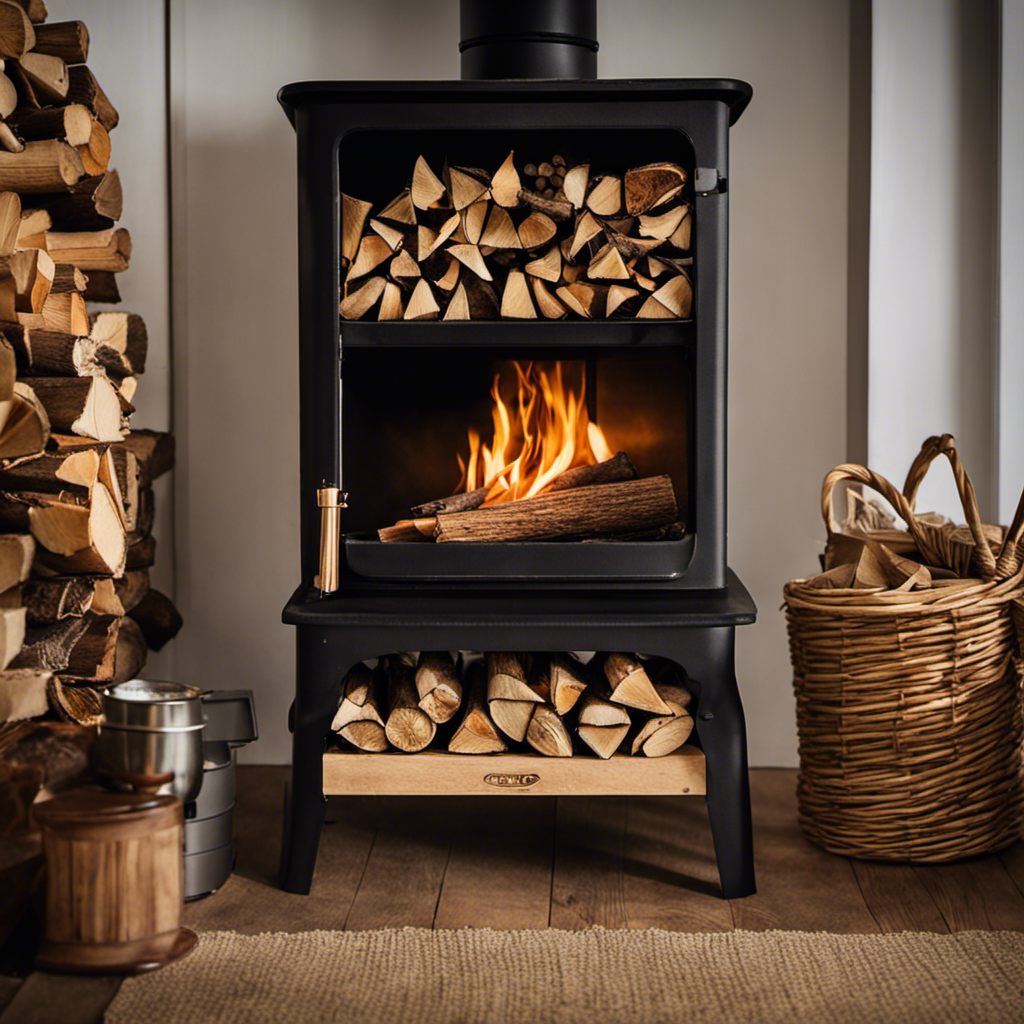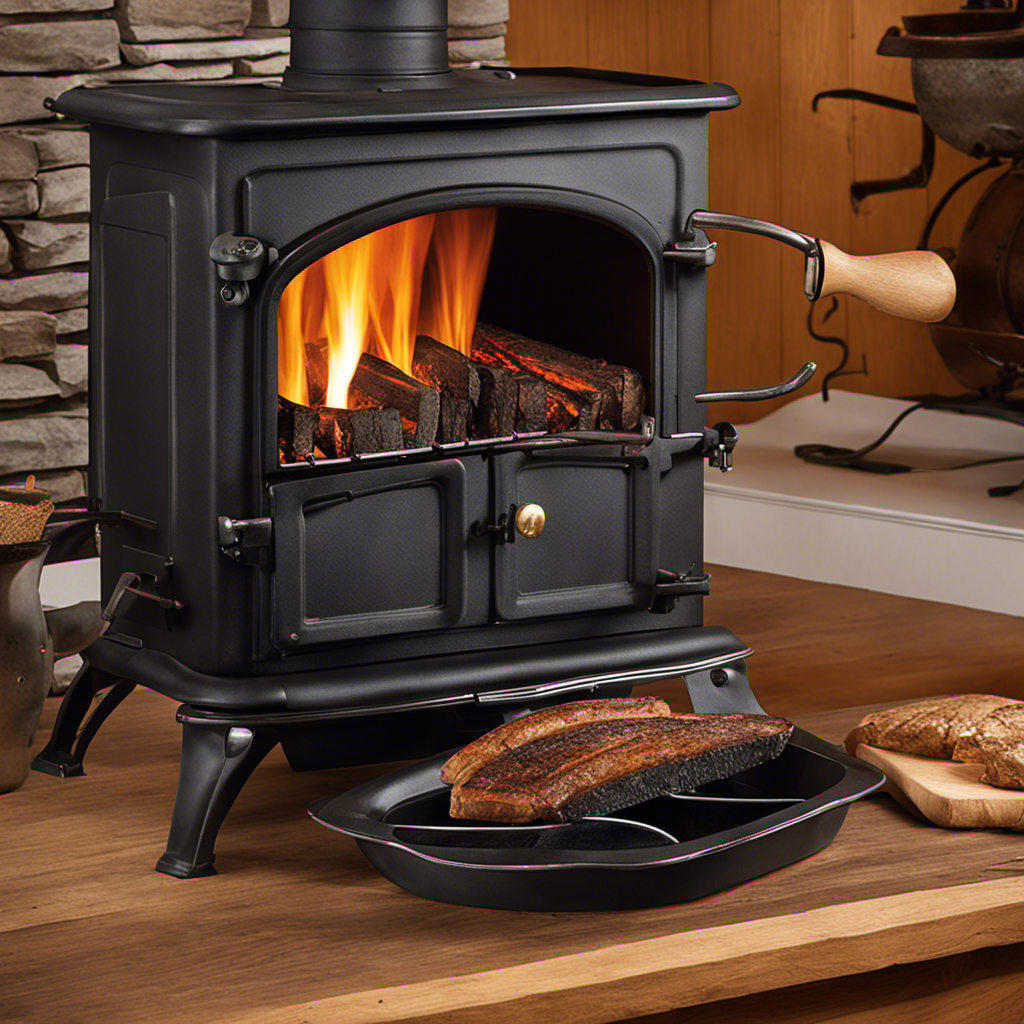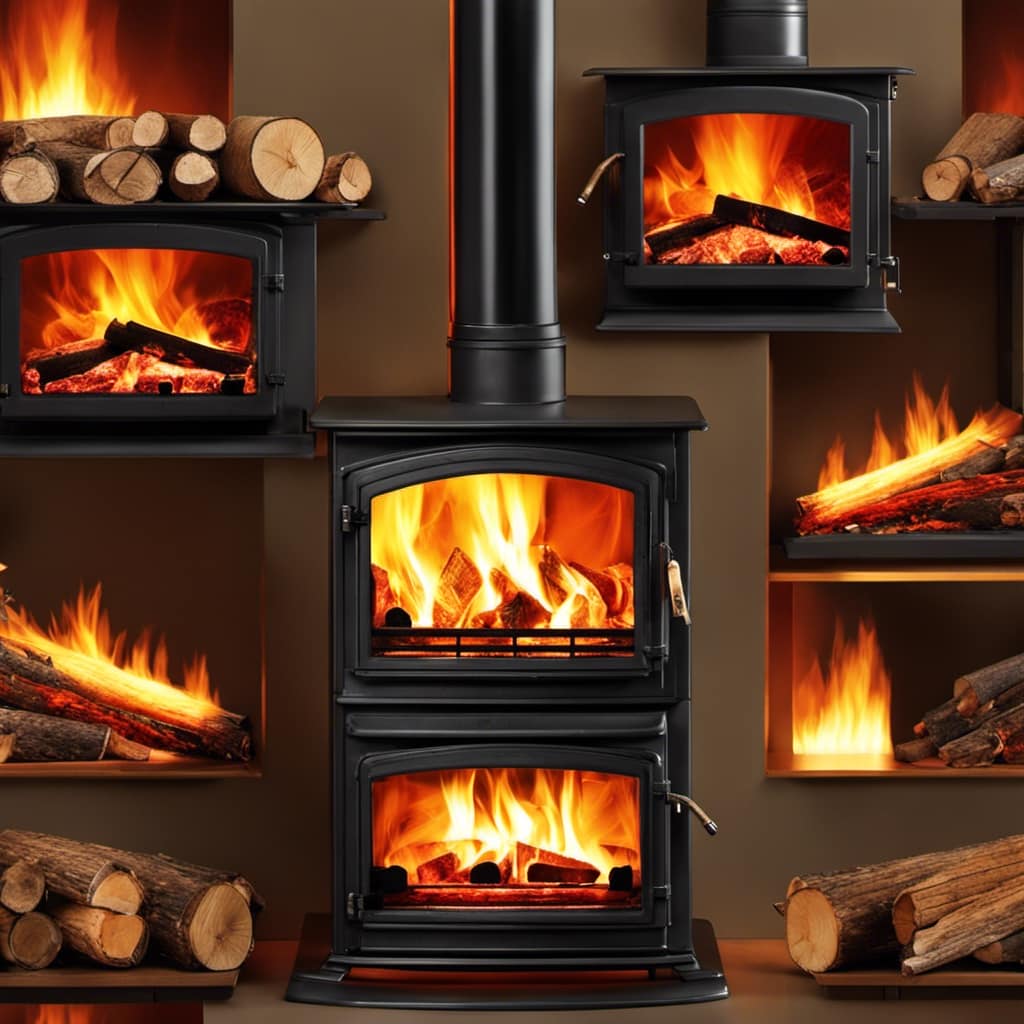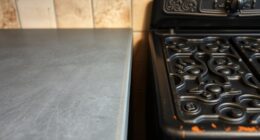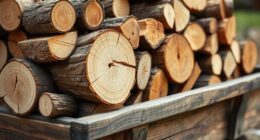I’ve always held the belief that the secret to a warm and inviting fire rests on the quality of the fire starters used. However, what is the optimal duration for drying out kindling for your wood-burning stove?
In this article, I’ll break down the importance of proper seasoning, the factors that affect the time it takes, and how to know when your kindling is ready.
Get ready to learn the secrets of perfectly seasoned kindling and enjoy a roaring fire all winter long.
Key Takeaways
- Seasoned kindling is important for easier ignition and a hotter flame.
- Properly dried kindling reduces smoke and creosote buildup in the chimney.
- The recommended seasoning period for kindling is typically 6-12 months.
- Proper storage in a dry and well-ventilated area is crucial to prevent reabsorption of moisture.
Understanding the Importance of Seasoning Kindling
I really understand the importance of seasoning kindling before using it in my wood stove. Seasoned kindling has several benefits that make it essential for efficient and safe fires.
Firstly, seasoned kindling is drier and contains less moisture, which allows it to ignite more easily and produce a hotter flame. This results in faster and more efficient fire-starting, ensuring that my wood stove reaches its desired temperature quickly.
Secondly, properly dried kindling reduces the amount of smoke and creosote buildup in the chimney, minimizing the risk of chimney fires.
To properly dry kindling, I gather small branches and split them into smaller pieces. I then stack them in a well-ventilated area, ensuring they’re off the ground and protected from rain. It usually takes about six months for the kindling to fully dry, but the wait is worth it for the benefits it provides.
Factors Affecting the Seasoning Time for Kindling
The humidity levels and temperature fluctuations are factors that can significantly impact the seasoning time for kindling. Properly seasoned kindling is essential for efficient and safe wood stove operation. Here are some key points to consider:
-
Drying methods: The choice of drying method can affect the overall seasoning time. Air drying is the most common method, but using a kiln or a dehumidifier can expedite the process.
-
Impact of moisture content: Moisture content is a crucial factor in determining the seasoning time. Higher moisture content will require more time for the kindling to dry properly.
-
Optimal moisture level: The ideal moisture content for seasoned kindling is around 15%-20%. This ensures efficient combustion and minimizes the risk of creosote buildup in the chimney.
-
Wood species: Different wood species have different moisture levels and densities, which can affect the seasoning time. Softer woods like pine may dry faster compared to hardwoods like oak.
-
Storage conditions: Proper storage is important to maintain the seasoned state of the kindling. Storing it in a dry and well-ventilated area will prevent reabsorption of moisture.
Understanding these factors and taking appropriate steps will ensure that your kindling is properly seasoned and ready for use in your wood stove.
Recommended Seasoning Period for Kindling
The recommended seasoning period for kindling is typically 6-12 months, but it can vary depending on factors such as wood species and storage conditions. During this period, the goal is to reduce the moisture content of the wood to optimal levels for efficient burning.
Kindling with moisture levels between 15-20% is considered ideal for achieving a clean and hot fire. However, speeding up the seasoning process is often desirable, especially when you need dry kindling sooner.
There are several methods you can try to accelerate the drying time. One option is to split the kindling into smaller pieces, which increases the surface area exposed to air and speeds up evaporation. Another approach is to stack the wood in a well-ventilated area, allowing air circulation to remove moisture more efficiently.
Additionally, using a moisture meter can help you monitor the progress and ensure that the kindling is properly seasoned before use.
Signs That Your Kindling Is Properly Seasoned
Often, properly seasoned kindling will have a distinct dryness and a light weight. This is because the moisture content has been reduced, making it easier to ignite and burn efficiently. Using seasoned kindling offers several benefits, such as:
- Improved fire-starting: Seasoned kindling ignites quickly, allowing the fire to establish faster.
- More heat output: Dry kindling burns hotter, creating a more intense and efficient fire.
- Reduced smoke and emissions: Properly seasoned kindling produces less smoke and harmful emissions.
- Longer burning time: Dry kindling burns longer, providing sustained heat for a longer period.
- Cleaner stove and chimney: Seasoned kindling produces less soot and creosote buildup, reducing the risk of chimney fires.
However, there are common mistakes to avoid when seasoning kindling, such as insufficient drying time, storing it in a damp or humid area, or using green wood. These errors can result in damp or unburnable kindling.
Transition: Now that we understand the benefits of using properly seasoned kindling and the mistakes to avoid, let’s move on to discussing tips for properly storing seasoned kindling.
Tips for Properly Storing Seasoned Kindling
How can I effectively store seasoned kindling to ensure it remains dry and ready to use?
Storing kindling efficiently is essential for maintaining its quality and usability. The first step is to choose the right kindling for your wood stove. Look for dry, lightweight materials such as small twigs, dried leaves, or bark. It’s important to avoid using green or damp wood, as it can be challenging to ignite and will produce more smoke.
Once you have selected the ideal kindling, you can store it in a dry and well-ventilated area. Use a designated container or a firewood rack to keep it off the ground and protected from moisture. Additionally, consider covering the kindling with a tarp or plastic sheet to shield it from rain or snow.
Frequently Asked Questions
Can I Season Kindling in a Plastic Bag or Container?
You can season kindling in a plastic bag or container, but it may take longer to reach the ideal moisture content. It’s best to use a well-ventilated area or a dedicated kindling rack for faster and more effective seasoning.
What Happens if I Use Unseasoned Kindling in My Wood Stove?
Using unseasoned kindling in a wood stove can lead to several potential risks such as excessive smoke, increased creosote buildup, and reduced efficiency. To avoid these issues, it is important to properly season your kindling for optimal wood stove performance.
How Do I Know if My Kindling Is Over-Seasoned?
When it comes to knowing if your kindling is over-seasoned, look for signs like excessive dryness, brittleness, and crumbling. Properly storing seasoned kindling in a cool, dry place will help maintain its quality and prevent over-seasoning.
Can I Speed up the Seasoning Process for My Kindling?
I can speed up the seasoning process for kindling by using alternative methods. It’s important to know that the length of time for seasoning depends on various factors.
Is It Necessary to Season Kindling if I Am Using a Wood Stove With a Built-In Igniter?
Seasoning kindling is necessary for wood stoves with built-in igniters. It ensures a more efficient burn and reduces the risk of creosote buildup. Aim to season kindling for at least 6-12 months for optimal results.
Conclusion
In the dance of firewood, kindling is the vibrant partner that ignites the flame. Just as a well-seasoned dancer captivates the stage, seasoned kindling holds the power to transform a wood stove into a fiery spectacle.
Understanding the importance of proper seasoning and the factors that affect it’s key to achieving optimal performance. With patience and care, seasoned kindling will reward you with a warm and inviting fire, ensuring cozy nights and enchanting moments.

